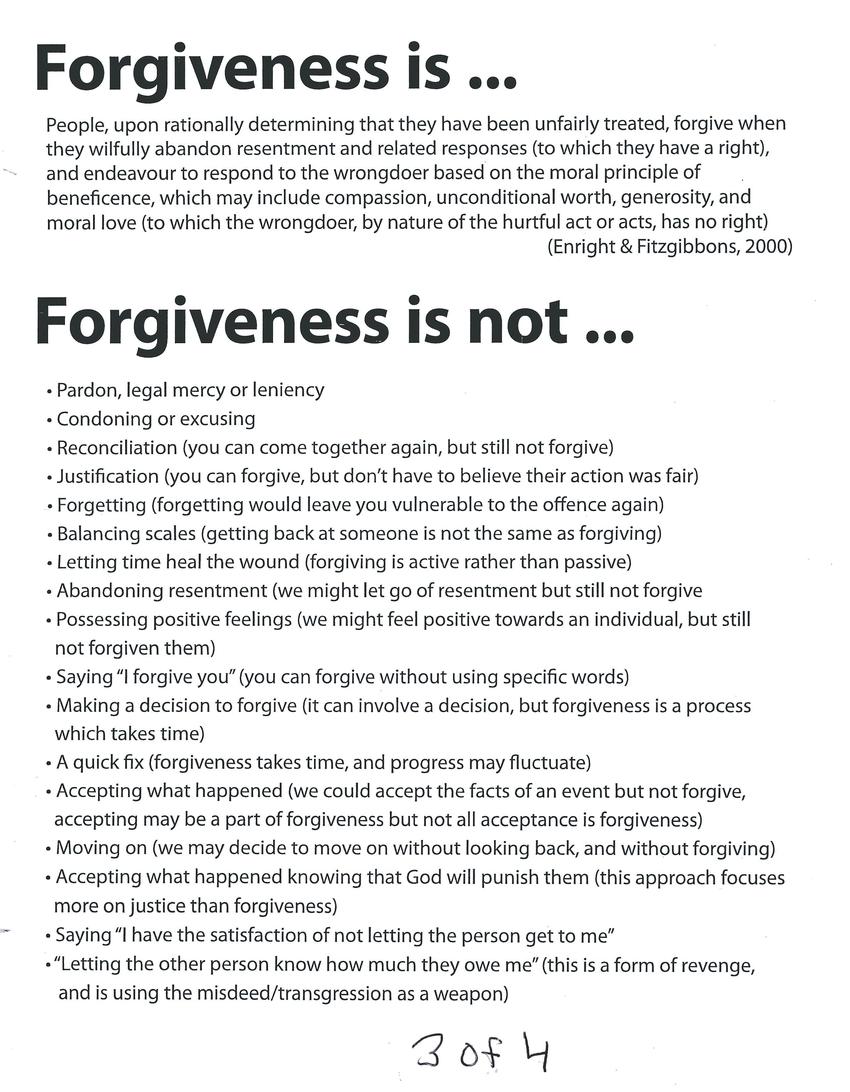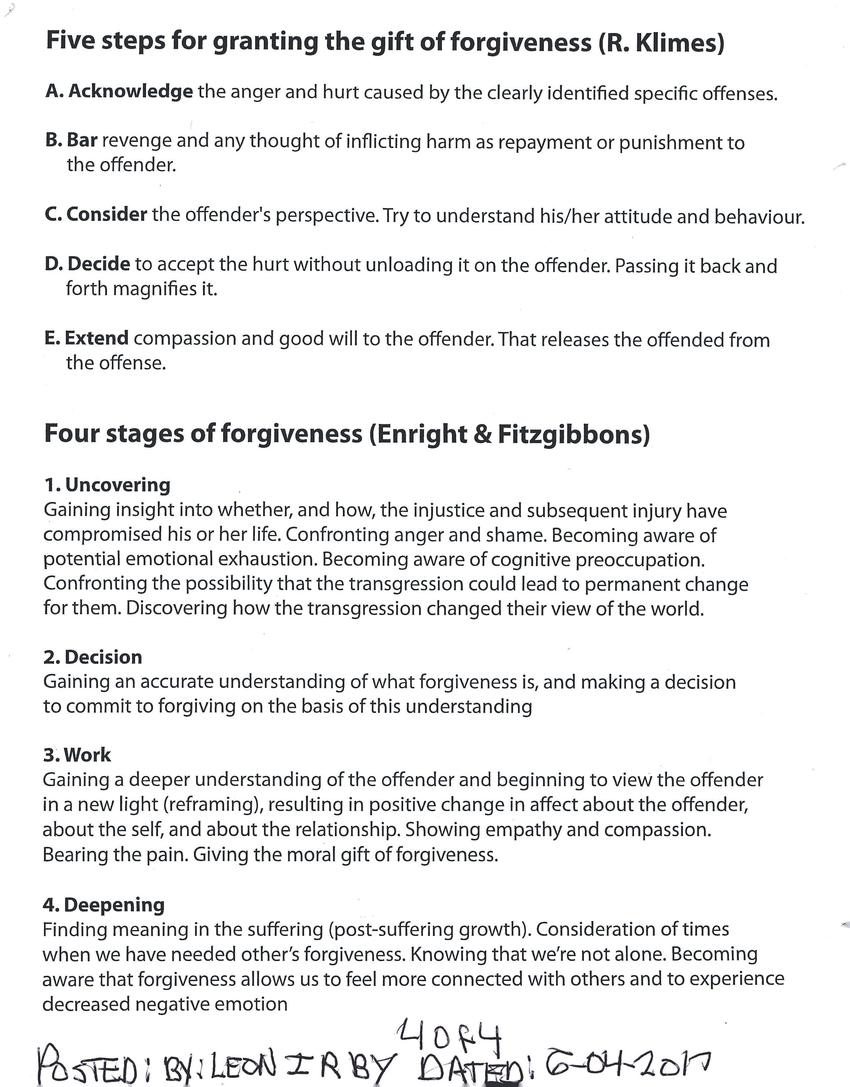
Transcription
Forgiveness is...
People, upon rationally determining that they have been unfairly treated, forgive when they wilfully abandon resentment and related responses (to which they have a right), and endeavour to respond to the wrongdoer based on the moral principle of beneficence, which may include compassion, unconditional worth, generosity, and moral love (to which the wrongdoer, by nature of the hurtful act or acts, has no right)
(Enright & Fitzgibbons, 2000)
Forgiveness is not...
- Pardon, legal mercy or leniency
- Condoning or excusing
- Reconciliation (you can come together again, but still not forgive)
- Justification (you can forgive, but don't have to believe their action was fair)
- Forgetting (forgetting would leave you vulnerable to the offence again)
- Balancing scales (getting back at someone is not the same as forgiving)
- Letting time heal the wound (forgiving is active rather than passive)
- Abandoning resentment (we might let go of resentment but still not forgive)
- Possessing positive feelings (we might feel positive towards an individual, but still not forgiven them)
- Saying "I forgive you" (you can forgive without using specific words)
- Making a decision to forgive (it can involve a decision, but forgiveness is a process which takes time)
- A quick fix (forgiveness takes time, and progress may fluctuate)
- Accepting what happened (we could accept the facts of an event but not forgive, accepting may be a part of forgiveness but not all acceptance is forgiveness)
- Moving on (we may decide to move on without looking back, and without forgiving)
- Accepting what happened knowing that God will punish them (this approach focuses more on justice than forgiveness)
- Saying "I have satisfaction of not letting the person get to me"
- "Letting the other person know how much they owe me" (this is a form of revenge, and is using the misdeed/transgression as a weapon)
Five steps for granting the gift of forgiveness (R. Klimes)
A. Acknowledge the anger and hurt caused by the clearly identified specific offenses.
B. Bar revenge and any thought of inflicting harm as repayment or punishment to the offender.
C. Consider the offender's perspective. Try to understand his/her attitude and behaviour.
D. Decide to accept the hurt without unloading it on the offender. Passing it back and forth magnifies it.
E. Extend compassion and good will to the offender. That releases the offended from the offense.
Four stages of forgiveness (Enright & Fitzgibbons)
1. Uncovering
Gaining insight into whether, and how, the injustice and subsequent injury have compromised his or her life. Confronting anger and shame. Becoming aware of potential emotional exhaustion. Becoming aware of cognitive preoccupation. Confronting the possibility that the transgression could lead to permanent change for them. Discovering how the transgression changed their view of the world.
2. Decision
Gaining an accurate understanding of what forgiveness is, and making a decision to commit to forgiving on the basis of this understanding
3. Work
Gaining a deeper understanding of the offender and beginning to view the offender in a new light (reframing), resulting in positive change in affect about the offender, about the self, and about the relationship. Showing empathy and compassion. Bearing the pain. Giving the moral gift of forgiveness.
4. Deepening
Finding meaning in the suffering (post-suffering growth). Consideration of times when we have needed other's forgiveness. Knowing that we're not alone. Becoming aware that forgiveness allows us to feel more connected with others and to experience decreased negative emotion
POSTED: BY: LEON IRBY DATED: 6-04-2017
Other posts by this author
|
2023 feb 1

|
2022 dec 14

|
2022 dec 12

|
2022 dec 10

|
2022 aug 31

|
2022 jun 22

|
More... |



Replies (2)